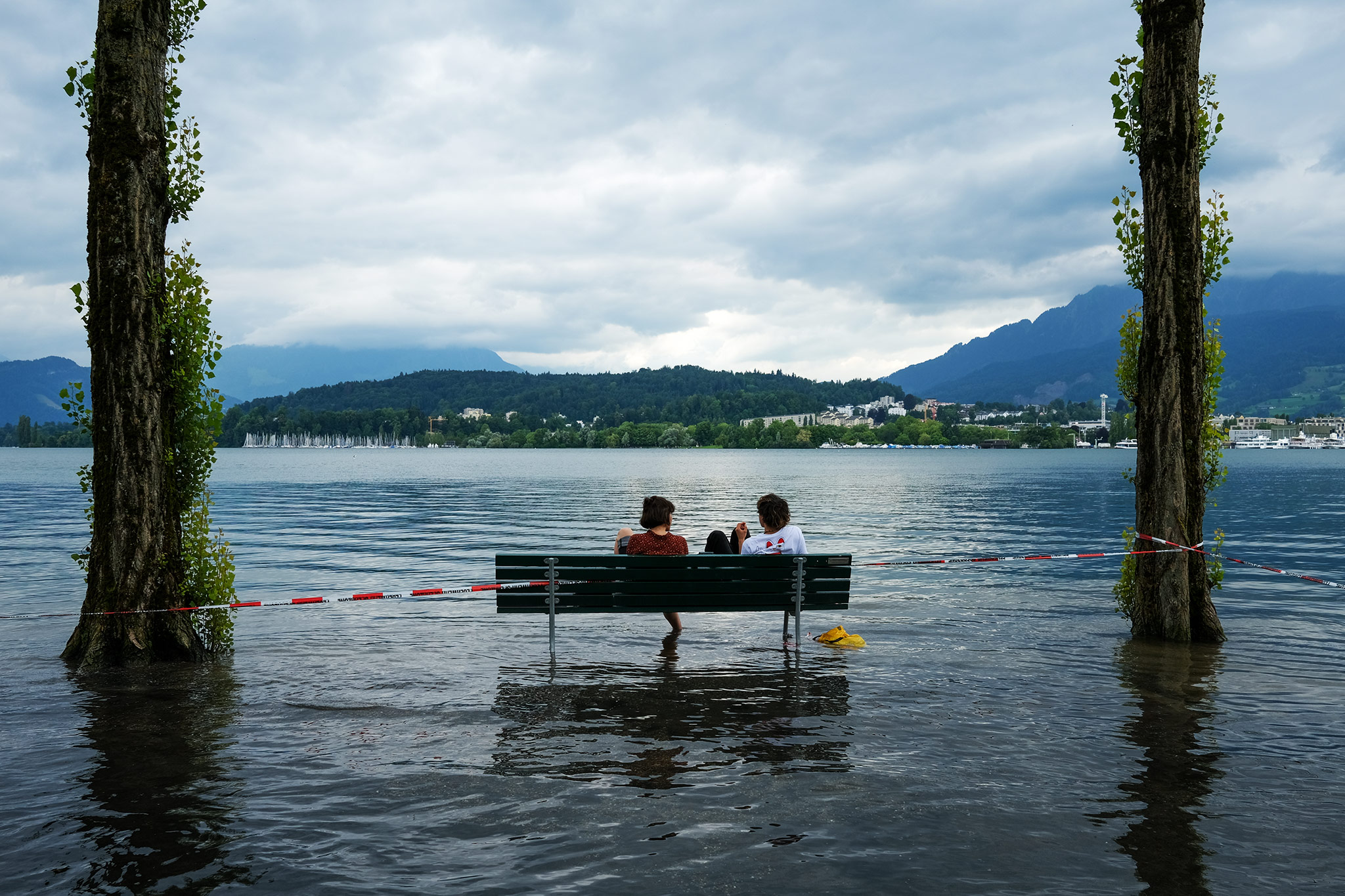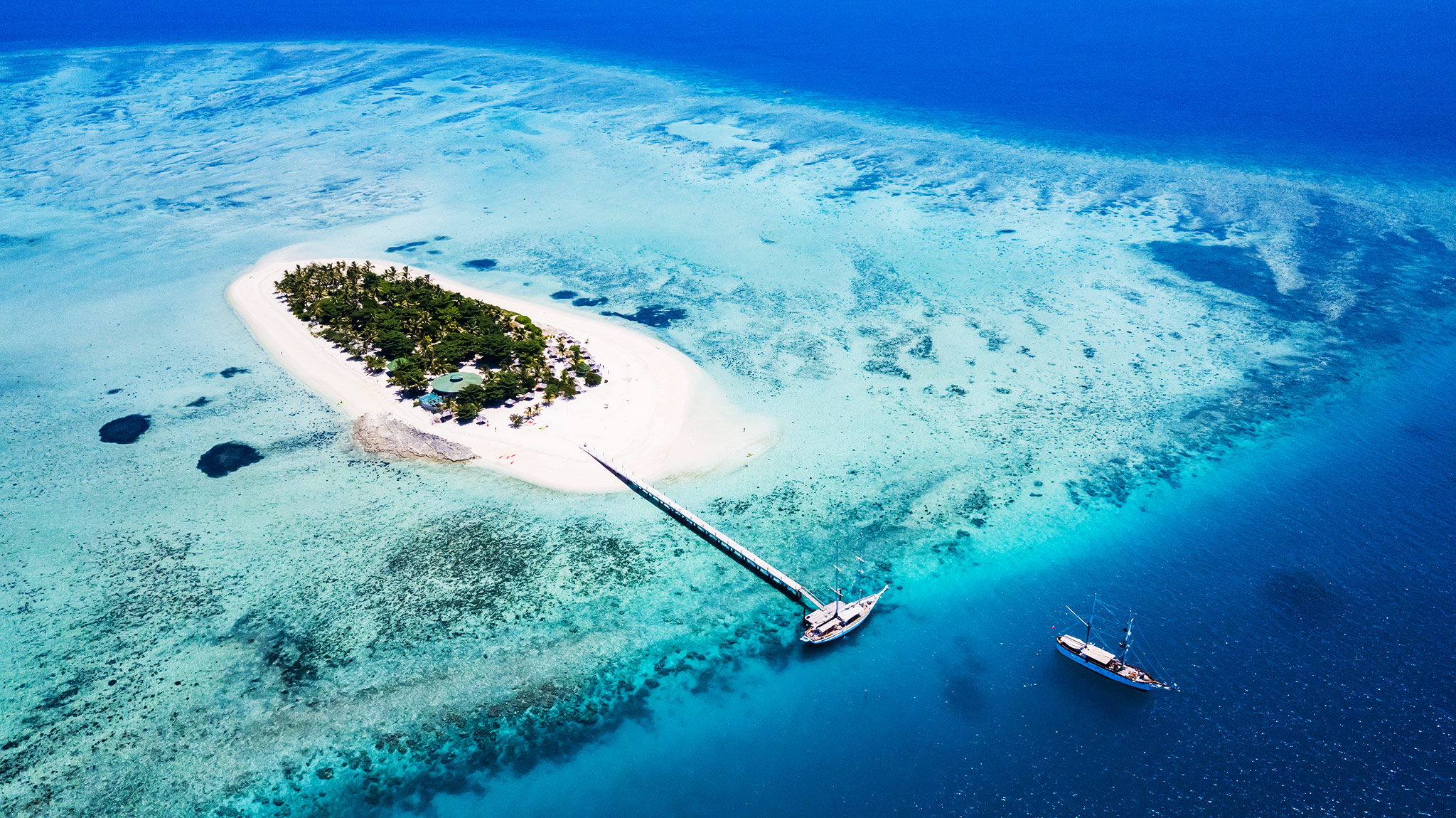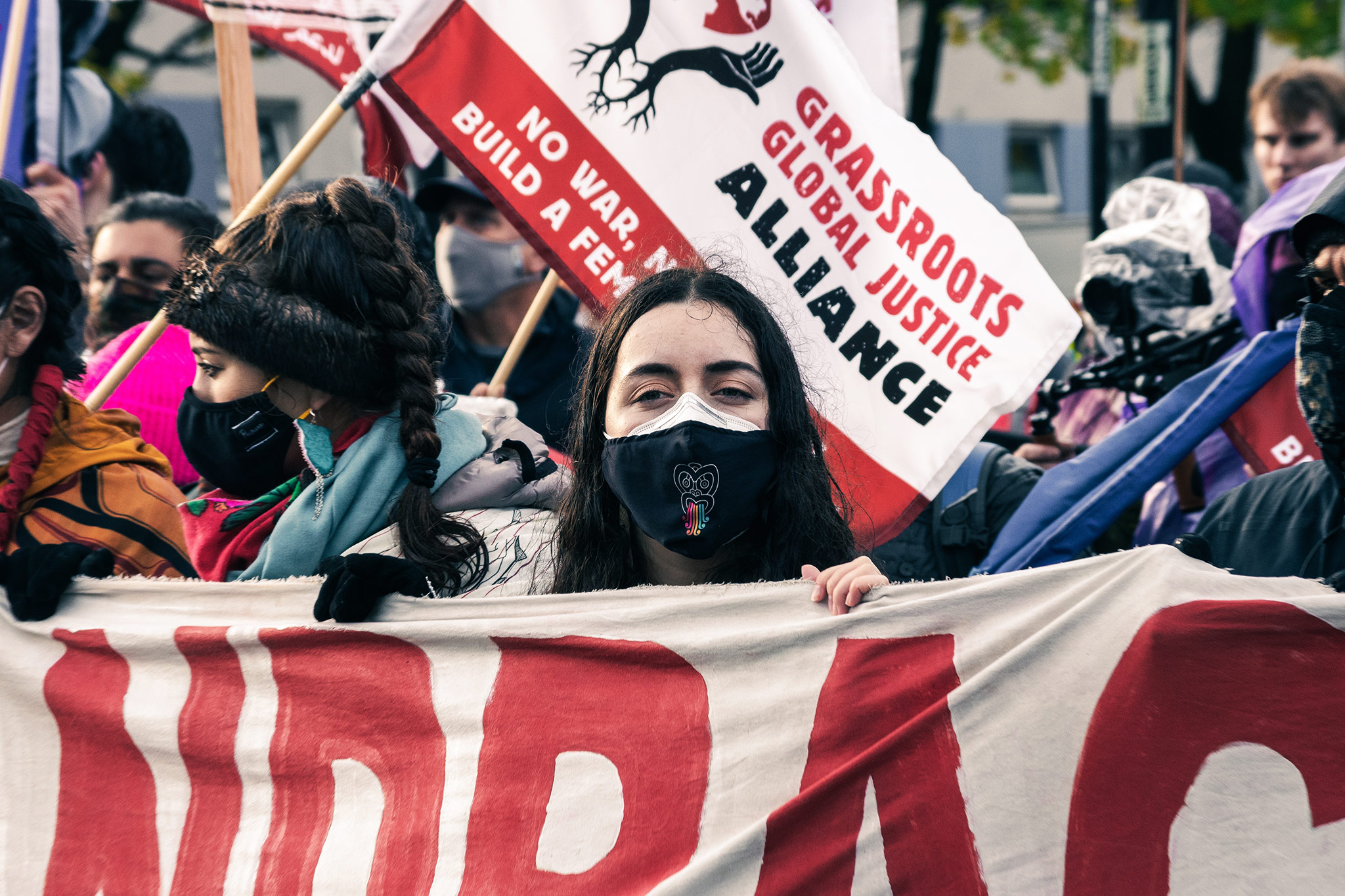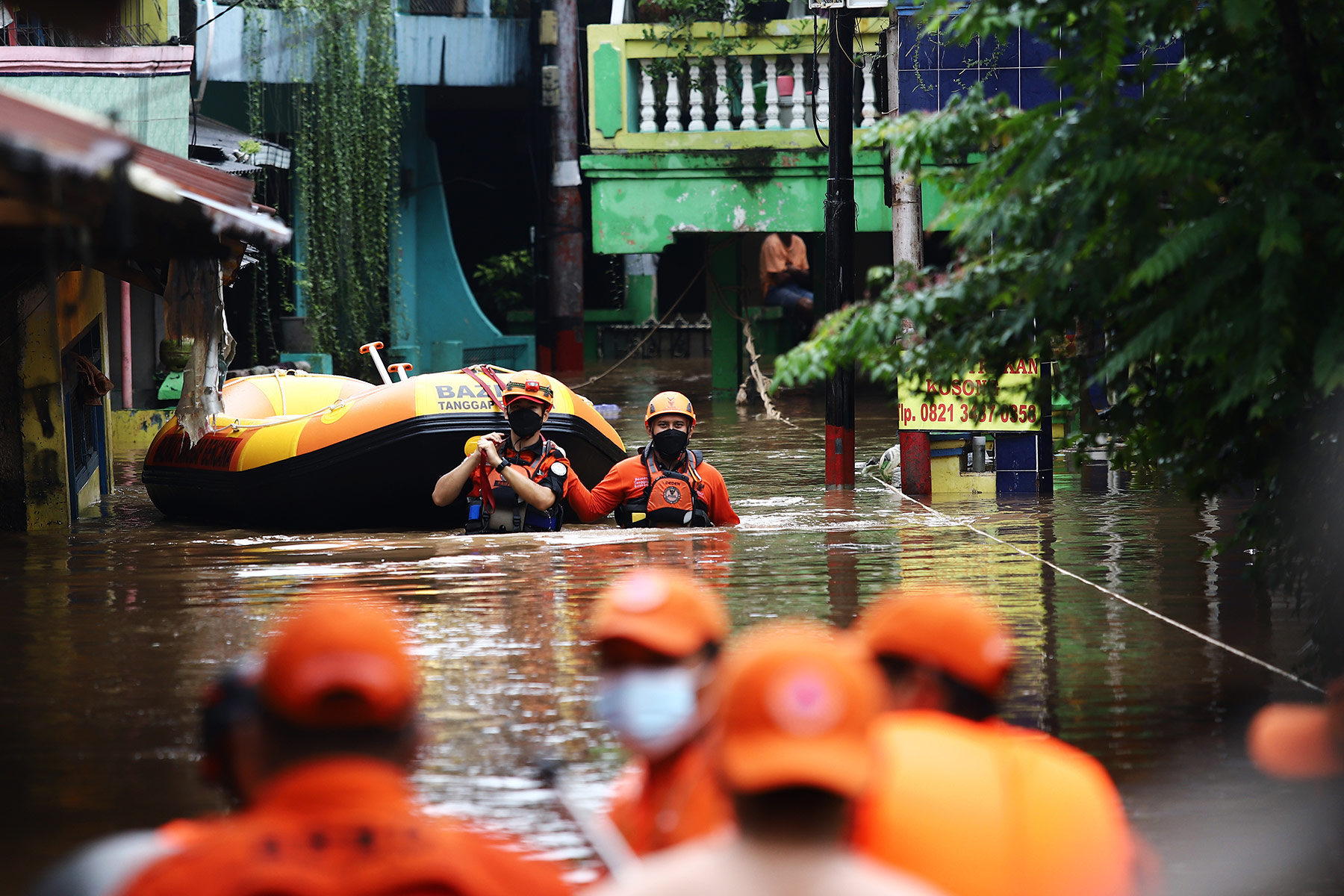There is no question about it: Our planet is warming faster than ever before. Having plateaued around 280 parts per million for thousands of years, global CO2 emissions have shot past 400 ppm at the end of the last decade, an atmospheric rise set in motion by the 18th-century Industrial Revolution. Human activity in its myriad modes of creative destruction has led to a global average temperature rise between 1.1˚C and 1.2˚C above pre-industrial levels. It brought with it nature’s wrath in the form of an ever-increasing number of extreme weather events — wildfires and floods, one-in-a-lifetime storms and heatwaves, droughts and rising seas.
Fiji’s Women Are Living the Reality of Climate Change
Climate change, as the skeptics like to remind us, does occur naturally. Analysis by the Intergovernmental Panel on Climate Change (IPCC) estimates that temperatures during the last interglacial period, which began 130,000 years ago and lasted somewhere between 13,000 and 15,000 years, were 0.5˚C and 1˚C warmer than in pre-industrial times and up to 2˚C or even 4˚C warmer during the mid-Pliocene Warm Period, around 3 million years ago. But while there are natural processes in place, the pace of climate change over the past century has demonstrated the devastating effect of anthropogenic activity on the delicate balance of life on Earth.
The Seas Are Rising
What is significant about the IPCC assessment is that during the last interglacial period, sea levels were likely between 6 meters and 9 meters higher, possibly reaching 25 meters during the mid-Pliocene. That may sound farfetched, but modeling suggests a 2.3-meter rise per 1˚C of warming. Globally, the average sea level has already increased by 0.2 meters since the late 19th century, starting at a rate of 1.4 millimeters a year from 1901 to 1990 and accelerating to 3.6 millimeters a year between 2006 and 2015.
This spells disaster for the coastal areas. A study published in Environmental Research Letters earlier this year suggests that, even with no net global emissions after 2020, “the carbon already in the atmosphere could sustain enough warming for global mean sea level to rise 1.9 (0–3.8) meters over the coming centuries,” meaning that currently, anywhere between 120 million and 650 million people — or a mean of 5.3% of the world’s population — live on land below the new tide lines.

Even if warming is kept under the upper limit of the Paris Agreement of 2˚C above pre-industrial levels, multi-century sea level rise can reach 4.7 meters, threatening the livelihoods of double the number of people, the authors assess. In 2019, the IPCC estimated that this number could reach 1 billion by 2050. The panel predicts a rise of anywhere between 0.29 meters and 1.1 meters by 2100 relative to 1985-2005, depending on emission rates. A paper published in Nature concluded that if we stay on the current emissions course heading for 3˚C warming, we will reach a tipping point by 2060, with the Antarctic ice sheet alone adding 0.5 centimeters to global sea levels each year.
According to the authors of a 2019 study on sea-level rise and migration, rising waters are predicted to be the “most expensive and irreversible future consequences of global climate change, costing up to 4.5% of global gross domestic product.” A 2018 projection by C40, a network of mayors of nearly 100 global cities, estimated that a 2˚C rise could affect 800 million people in 570 urban centers by mid-century. As the authors of a 2021 study summarize, “Although there is large variability in future sea level projections, due, for instance, to the uncertainty in anthropogenic emissions, there is consensus on the potentially catastrophic worldwide impact of SLR.”
A 2˚C rise puts land that houses over half the population of Vietnam and Bangladesh and over 80% of those living in the island nations like Kiribati, Tuvalu, the Bahamas and the Marshall Islands below the tide line. The Maldives, with 80% of its 1,200 atolls not even reaching 1 meter above sea level — the world’s lowest terrain, with its highest elevation point of just 2.4 meters — is particularly at risk; there is literally nowhere to hide. In May, the minister for the environment, climate change and technology, Aminath Shauna, told CNBC that if current trends continue, the island nation “will not be here” by 2100. “We will not survive. … There’s no higher ground for us … it’s just us, it’s just our islands and the sea.”
Water, Water Everywhere
It is clear that Alisi Rabukawaqa, project liaison officer at the International Union for Conservation of Nature, she has given this a lot of thought. When I ask her about the reality of climate change in what many would consider to be a tropical paradise — her native Fiji — she doesn’t stop talking for nearly 10 minutes. She remembers a time when devastating cyclones were “lifetimes apart.” Now, category 5 storms are a regular, looming threat.
“And if it’s not cyclones, it’s the drought. And if it’s not the drought, it’s the saltwater intrusion that’s impacting where people plant; and if it’s not that, it’s seeping into drinking sources and boreholes from outer islands,” she tells me from a Fiji so hot, everyone is bracing for another cyclone.
While for most communities affected by sea-level rise and saltwater intrusion relocation is still “further down the line,” traditional land ownership laws mean that you can’t just pack up and move anywhere you like, even if, unlike in the Maldives, there is higher ground. In 2017, the government’s National Development Plan identified over 830 vulnerable communities, 48 of which were in urgent need of resettlement. The plan was developed a year after Tropical Cyclone Winston, which hit Fiji in February 2016, significantly affected around 350,000 people. That is a high number by any standard; here, it’s more than a third of the population.

“Fiji is a small place relatively, so all those things combined, it’s made us more vulnerable,” Rabukawaqa says. “In the past, it was just the issue of development, thinking of proper development, like, How do we do this right? How do you ensure it’s sustainable? Reforestation. Those seem like simpler times.”
Saltwater intrusion is what is having a major impact on the coastal community of Barishal in Bangladesh, home to Kathak Biswas Joy, district coordinator with Youth Net for Climate Justice, member of the advisory team with Child Rights Connect and the founder of the non-profit Aranyak. It was his work on children’s rights that made him realize that “in Bangladesh, everything is related to climate change.” As it exacerbates existing inequalities, driving migration from the countryside — where salinity and flooding are destroying farmland — to the coastal cities, child labor and child marriage become ever more commonplace.
So does disease. Increased salinity has been linked to numerous problems during pregnancy and child mortality, hair loss and skin diseases, dysentery, hypertension, risk of miscarriage and changes in menstrual cycles as well as difficulty with maintaining hygiene. The deadly dengue fever, already the “fastest growing vector-borne viral disease in the world” as a result of a warmer, wetter climate, has ravaged Bangladesh alongside the COVID-19 pandemic. In a country where water is everywhere, it seems to bring as little relief as it did to Samuel Taylor Coleridge’s ancient mariner.
Rabukawaqa echoes this sentiment. In a nation that depends almost entirely on the ocean, the traditional and cultural relationship with it is turning from “a beautiful, loving, caring one … into one where the ocean is suddenly becoming our enemy. And we don’t want it to be that way.”
On Your Doorstep
If you think that Alisi Rabukawaqa’s and Kathak Biswas Joy’s problems are far from your world, think again. While nine out of 10 top large countries at risk from sea-level rise are located in Asia, no place is safe. Many of the world’s most vibrant cities already face a considerable threat from flooding by as early as 2030 — less than a decade from now. Climate Central, a nonprofit, has used data from “peer-reviewed science in leading journals” to map areas most at risk over the coming century. While the creators warn that the mapping is bound to include errors, its scope of doom is frightening.
If global warming is not halted, cities as diverse as Bangkok, New Orleans, Lagos, Rio de Janeiro, Hamburg, Yangon, Antwerp, Basra, Dhaka, New York and Dubai may see entire neighborhoods submerged. On average, coastal residents experience a sea-level rise of around 8 millimeters to 10 millimeters a year for every 3-millimeter rise in sea levels due to subsidence — the slow sinking of land that occurs in river deltas that can be exacerbated by the extraction of resources like groundwater and oil.
Tokyo, for example, sank by 4 meters over the course of last century, Shanghai, Bangkok and New Orleans by 2 meters. The Thai capital, built on what is known as “Bangkok clay,” saw the water-logged areas it sits on drained to accommodate for agriculture and urban expansion, making flooding a recurring problem, exacerbated by a six-month-long rainy season.
In Shanghai alone, China’s financial hub that sits in the Yangtze River estuary surrounded by lakes, nearly $1 trillion of assets are at risk as a result of rising waters, according to analysis by the Financial Times. The Pearl River Delta Economic Zone, which generates 20% of China’s GDP and 3.8% of global wealth, is one of the areas most at risk of sea-level rise. In May, China’s Ministry of Ecology and Environment estimated that its coastal waters were 73 millimeters above “normal” average for the period between 1993 and 2011, with temperatures 0.7˚C above the 1981-2010 range.
In Venice, the aqua alta, or “high water,” usually occurs between autumn and spring caused a combination of tide peaks, sirocco winds and the lunar cycle. The city that encompasses some 100 lagoon islands has been threatened by water for centuries, but according to city data, Venice had experienced as many inundations over 1.1-meters aqua alta levels in the last two decades alone as over the whole of the previous century. The 2019 flood that submerged 80% of the city, killing two and causing devastating damage to historical landmarks and $1 billion of losses, saw the second-highest water level in its history.
Mozambique, with one of the longest coastlines in Africa that spans 2,470 kilometers and is home to 60% of the population, is in danger of losing an estimated 4,850 square kilometers of land surface by 2040, according to an assessment by USAID. With 45% already living below the poverty line, 70% currently depend on climate-sensitive living conditions. According to a 2021 study published in the Journal of Marine Science and Engineering, 20% of the population relies on fishing as the main income, contributing some 10% of the country’s GDP, alongside 5% brought in by tourism.

Coastal erosion and increasing extreme weather events like Cyclone Idai, the deadliest storm in the history of southern Africa, and Cyclone Kenneth, that hit Mozambique in 2019, threaten all of this — as well as the country’s fragile ecosystems like coral reefs. Idai and Kenneth caused $3.2 billion worth of damage; at around 22% of the country’s GDP, that’s about half the annual budget.
If the current projections are correct, 12 of India’s coastal cities may be under 1 meter of water by the end of the century. Mumbai, the country’s economic capital, and Kolkata, India’s third-largest city built in the lower Ganges Delta, rely on drainage systems dating back to colonial times. Consequently, Mumbai experiences floods every year these days. According to IPCC assessment, Kolkata warmed more than any other studied city between 1950 and 2018, by 2.6˚C — ahead of Tehran’s 2.3˚C and Moscow’s 1˚C — and may see its one-day maximum rainfall rise by 50% by 2100.
While the United Kingdom is not exactly known for sunny climes, the Albion has been experiencing record-breaking rainfall, more frequent storms and flooding, at a cost of £1.4 billion a year in damages, or around £800 million per flood, according to government figures. With the temperature already a degree warmer than a century and a half ago, storms like Desmond, which caused £1.6 billion worth of devastation in 2015, may become 59% as likely.
In the Thames floodplain, London’s iconic locations like Tower Bridge, Hampton Court and the London Eye are at risk by 2050. Earlier this year, flooding in central London influenced Queen guitarist Brian May’s decision to pack up and leave, one of the more high-profile climate refugees escaping the rising seas.
In its latest report published in September, the World Bank suggested that as many as 200 million people could be displaced as a result of climate change, an upgrade from its 2018 figure of 148 million. The Institute for Economics and Peace put the number of climate refugees at 1.2 billion. While it is difficult to predict how people will respond to the new circumstances over the coming decades, analysis by Brookings suggests that of the 68.5 million displaced in 2017, approximately one-third was on the move due to “’sudden onset’ weather events — flooding, forest fires after droughts, and intensified storms.”
Conflicting studies on migration flows demonstrate just how difficult it is to model human behavior in the face of crisis. But we are highly adaptable and can move relatively freely (in the absence of border restrictions). In the animal kingdom faced with loss of vital habitats and fragile ecosystems, up to a third of all the world’s species can go extinct as a result of climate change by 2070, or more than half under a less optimistic emissions scenario. It is a tragedy the scope of which merits its own elegy.
A Drop in the Ocean
To quite literally stem the tide, many countries are adopting new technology in the hope to secure their future. China launched its “sponge city” initiative in 2015, with the aim to absorb and reuse 70% of rainwater by 2030; some 30 cities are taking part in the scheme, including Shanghai. Egypt’s historical city of Alexandria, where landmarks like Cleopatra’s palace and the famed lighthouse are in danger of submersion, has opted for widening its canals and rehousing people living alongside them.

The Netherlands, a third of which already lies below sea level, has been building flood defenses for millennia, and now prides itself on one of the most advanced systems in the world, including the giant sea gate of Maeslantkering that protects the harbor of Rotterdam. Last year, Venice managed to hold back the waters for the first time in 1,200 years with the help of the €7-billion flood barriers that have been under construction for nearly two decades.
Farmers in Bangladesh are turning to the centuries-old practice of floating farms, while Mumbai has been working to conserve its mangroves that can help absorb the impacts of cyclones and dissipate flooding.
The Maldives is planning to start the construction of the Dutch-designed Floating City in 2022, a first of its kind, to complement the artificial island of Hulhumale and its City of Hope, a reclamation project that is currently home to around 100,000 people. Miami is set to spend at least $3.8 billion over the next four decades to fund storm pumps and 6-foot-tall sea walls to protect against a once-in-five-years storm surge.
The Thames Estuary 2100 Plan has been developed to “protect 1.4 million people, £320 billion worth of property and critical infrastructure from increasing tidal flood risk” as well as “enhance and restore ecosystems and maximise benefits of natural floods” and enhance “the social, economic and commercial benefits the river provides.”
This is all good and well, but if we don’t halt the warming of the planet, all this effort will be but a mere drop in the ocean in the long run.
I ask Rabukawaqa how she feels about all these high-tech, high-cost efforts to keep back the waters. As a scientist, she thinks technology has a place, but says that in this instance, it’s not enough: “If we are going to look for and promote new technology that only results in us mining and extracting more from our lands and, in our case, most likely our oceans through deep-sea mining, it makes absolutely zero sense.” Across Fiji, there is widespread extraction of materials like sand and gravel, as well as copper and bauxite ore, which is only compounding the existing problems. “Maybe it’s not profitable, the way we are living and moving on this planet,” she says. “We need to move slower in this world.”
The Conference of the Parties (COP26) in Glasgow — home to the Industrial Revolution — was hailed as the “’last, best chance’ to keep 1.5˚C alive.” With much fanfare and squabbling over minutiae, the summit closed with its president, Alok Sharma, reduced to tears by India’s last-minute watering down of commitments on phasing out fossil fuels. On the same day, India’s capital New Delhi experienced levels of pollution that forced it into lockdown. While it is already one of the world’s most polluted cities, the symbolism of the timing is hard to dismiss.

Just as it is most at risk to sea-level rise, Asia — including Australia — is the world’s biggest consumer and producer of coal, accounting for three-quarters of the global total. With India setting its net-zero commitment to 2070, China to 2060 and the US announcing that it is unlikely to bolster its COP26 pledges to reach net-zero by 2050 in the coming year, it feels like a losing battle for low-emitters like Fiji and Bangladesh. Biswas Joy is disappointed that world leaders ended up blaming each other instead of coming up with a concrete plan for climate financing for developing nations. “It is not a relief — it is our needs,” he says. “We are not begging.”
“We deserve to continue to exist. But our existence really depends on everyone in the world coming to agree,” echoes Rabukawaqa. Both feel that their futures have been traded for profit margins. With just three Pacific Island leaders present in Glasgow vis-à-vis over 500 fossil fuel industry representatives, it is an unsurprising sentiment.
According to Climate Action Tracker (CAT), the Glasgow agreement has left a major credibility gap, with the planet still on course to produce twice as many emissions by 2030 as are necessary to keep the temperature rise below 1.5˚C. Without long-term target amendments, CAT calculates that we are on course for a 2.4˚C increase by the end of the century based on pledges alone. Projected warming under current policies is 2.7˚C. The most optimistic scenario, if all pledges are implemented, still has us on course for 1.8˚C by 2100.
Does all this mean that our future is out at sea? Both Biswas Joy and Rabukawaqa are hopeful. There were good things that came out of COP26, like the deforestation pledge and the fact that decades of activism by small island nations — or large ocean states, as they like to call themselves, Rabukawaqa jokes — have finally moved the needle on fossil fuels. Biswas Joy plans to continue his activism — and vote, when he is finally old enough. “Tomorrow, we come in, we try again,” says Rabukawaqa. “It’s big work.” But for her, “Optimism is not a choice. We have to do this.” She laughs, contagiously.
*[Correction: An earlier version of this piece stated that Cyclone Idai alone caused $3.2 billion worth of damage in Mozambique in 2019. This article was updated at 16:45 GMT on December 13, 2021.]
*[With thanks to Oliver Matikainen for his help with fact-checking the article.]
The views expressed in this article are the author’s own and do not necessarily reflect Fair Observer’s editorial policy.
Support Fair Observer
We rely on your support for our independence, diversity and quality.
For more than 10 years, Fair Observer has been free, fair and independent. No billionaire owns us, no advertisers control us. We are a reader-supported nonprofit. Unlike many other publications, we keep our content free for readers regardless of where they live or whether they can afford to pay. We have no paywalls and no ads.
In the post-truth era of fake news, echo chambers and filter bubbles, we publish a plurality of perspectives from around the world. Anyone can publish with us, but everyone goes through a rigorous editorial process. So, you get fact-checked, well-reasoned content instead of noise.
We publish 2,500+ voices from 90+ countries. We also conduct education and training programs
on subjects ranging from digital media and journalism to writing and critical thinking. This
doesn’t come cheap. Servers, editors, trainers and web developers cost
money.
Please consider supporting us on a regular basis as a recurring donor or a
sustaining member.
Will you support FO’s journalism?
We rely on your support for our independence, diversity and quality.








Comment